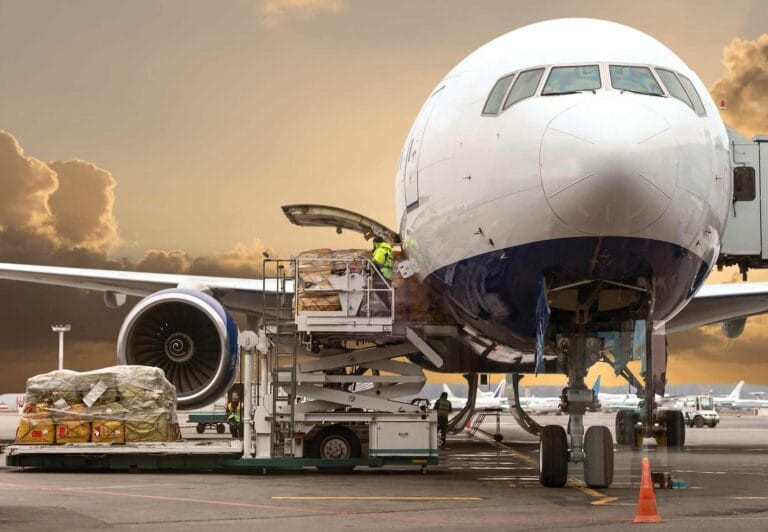e-commerce is driving global growth in air cargo, but the flows fuelling that growth are far from predictable. Beneath the headline surge in online orders lies a patchwork of geopolitical triggers, regulatory recalibrations, and sharp regional divergences. “For the first half of 2025, we’ve observed the strongest e-commerce growth between Asia–Europe and on Intra-Asia trade lanes,” Henri Le Gouis, Executive Vice-President for Global Freight Forwarding at GEODIS said. That isn’t surprising. Asia remains the epicentre of global e-commerce manufacturing and fulfilment, while European markets continue to absorb high volumes of B2C cross-border shipments. Intra-Asia growth reflects the increasing localisation of consumption in Southeast Asia and greater regional integration of fulfilment and warehousing. But not all corridors are moving in the same direction.
“The Transpacific corridor experienced a buoyant market due to tariff changes and adjustments to de minimis regulations,” Le Gouis continues, “which led to front-loading of volumes ahead of the effective dates, followed by a steep decline immediately after.”
In other words, growth on that lane wasn’t driven by rising demand, but regulatory anxiety. US tariff policy and revisions to low-value shipment thresholds prompted a wave of accelerated shipments, overwhelming networks briefly—only to trigger a subsequent vacuum. For forwarders and carriers alike, this kind of boom-bust cycle makes capacity planning unreliable and pricing unsustainable.
The Transpacific has long been one of the most active corridors in air freight. But when it becomes susceptible to regulatory whiplash, traditional volume forecasting becomes irrelevant. Tariff calendars now matter as much as peak season planning. That raises questions about the long-term stability of the route and whether e-commerce players will be forced to seek alternative entry points or fulfilment strategies.
Latin America enters the frame
While the Transpacific wavers under external pressures, another region is quietly gaining ground. “Latin America is emerging as a dynamic market for cross-border e-commerce,” Le Gouis points out—an observation that hasn’t yet made its way into most air cargo forecasts. Until recently, the region has lagged in terms of digital penetration, customs fluidity, and last-mile reliability. But recent shifts in consumer behaviour, logistics infrastructure and retail digitisation are beginning to change that.
Le Gouis notes that to meet the rising demand, GEODIS is expanding its regional footprint. “We continue to expand our presence and capabilities in these key regions, including local fulfilment, customs support, and dedicated transportation flows.”
This is more than a capacity story. It’s a strategic repositioning of networks toward emerging consumption zones. While the major integrators and e-commerce giants have built robust air and ground operations across North America and Europe, Latin America represents a less mature—but fast-developing—opportunity. Countries like Brazil, Mexico, and Colombia are seeing a steady rise in digital shopping habits, and are now demanding faster fulfilment models, including air cargo, to match consumer expectations.
From a regulatory standpoint, Latin America remains challenging. Customs procedures can be opaque and infrastructure uneven. But for forwarders willing to invest in localisation, the region offers an early-mover advantage. GEODIS’s approach – combining fulfilment centres, customs expertise, and local delivery support—is a reflection of the operational complexity required.
The new logic of airfreight demand
What the divergence between these trade lanes shows is a shift in how e-commerce demand behaves—and how air cargo needs to respond. It’s not just about where the volumes are growing. It’s about how unpredictable those volumes have become, and what that unpredictability does to planning cycles, margins, and network strategies.
One consequence is the increasing need for nimble, decentralised logistics. Forwarders are adapting by building more flexible capacity agreements, investing in near-gateway fulfilment, and deploying control tower systems for real-time coordination. But those are workarounds for a more fundamental problem: e-commerce air freight is no longer governed by retail demand alone. It’s entangled with policy shifts, supply chain bottlenecks, and local infrastructure constraints—all of which introduce new volatility into what was already a high-pressure sector.
Digital tools may offer some relief. Le Gouis references platforms like MyGEODIS that allow customers to book and manage shipments more directly. But these tools tend to be tailored to smaller B2C flows and are still limited in scope. There’s also the question of how sustainable this growth model is. While GEODIS, among others, is pushing greener delivery options and route optimisation to curb emissions, the very nature of fragmented, low-weight e-commerce shipments runs counter to efficiency. As volumes rise across emerging regions, the carbon cost of building and maintaining air-based fulfilment loops will only increase.
Why this matters now
The industry’s attention has been focused—perhaps too narrowly—on Asia and Europe as e-commerce growth anchors. But if the Transpacific’s tariff-driven distortion and Latin America’s emergence tell us anything, it’s that global e-commerce flows are evolving more erratically than expected.
What’s new is not simply where the demand is, but why it appears and disappears. A corridor like the Transpacific, long assumed to be a growth constant, can now be undercut or inflated by legislative reform. Meanwhile, Latin America, a region often sidelined in global air freight discussions, is moving up the value chain.
For air cargo professionals, this shift demands a re-evaluation of assumptions. The most profitable trade lanes of the last decade may not define the next one. Networks will have to decentralise, data will need to become predictive rather than reactive, and investment will need to follow not just volumes—but volatility.
“To meet this growing demand, GEODIS continues to expand its presence and capabilities in these key regions”





